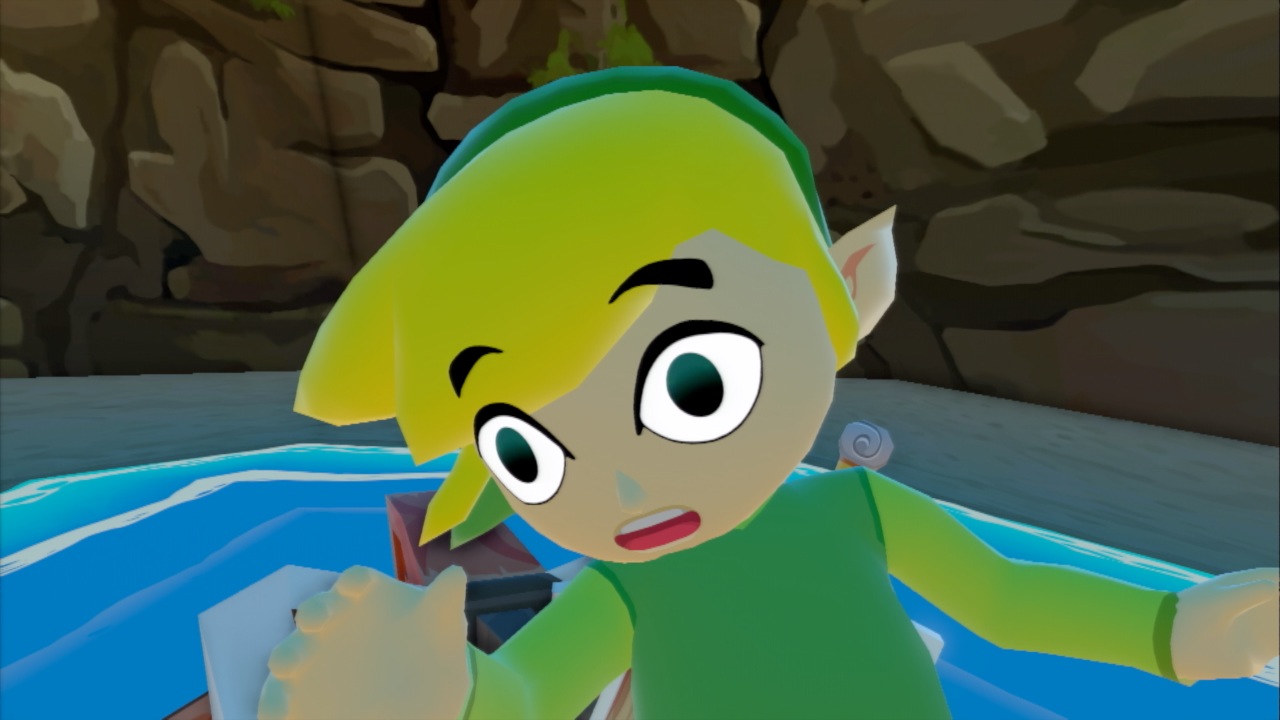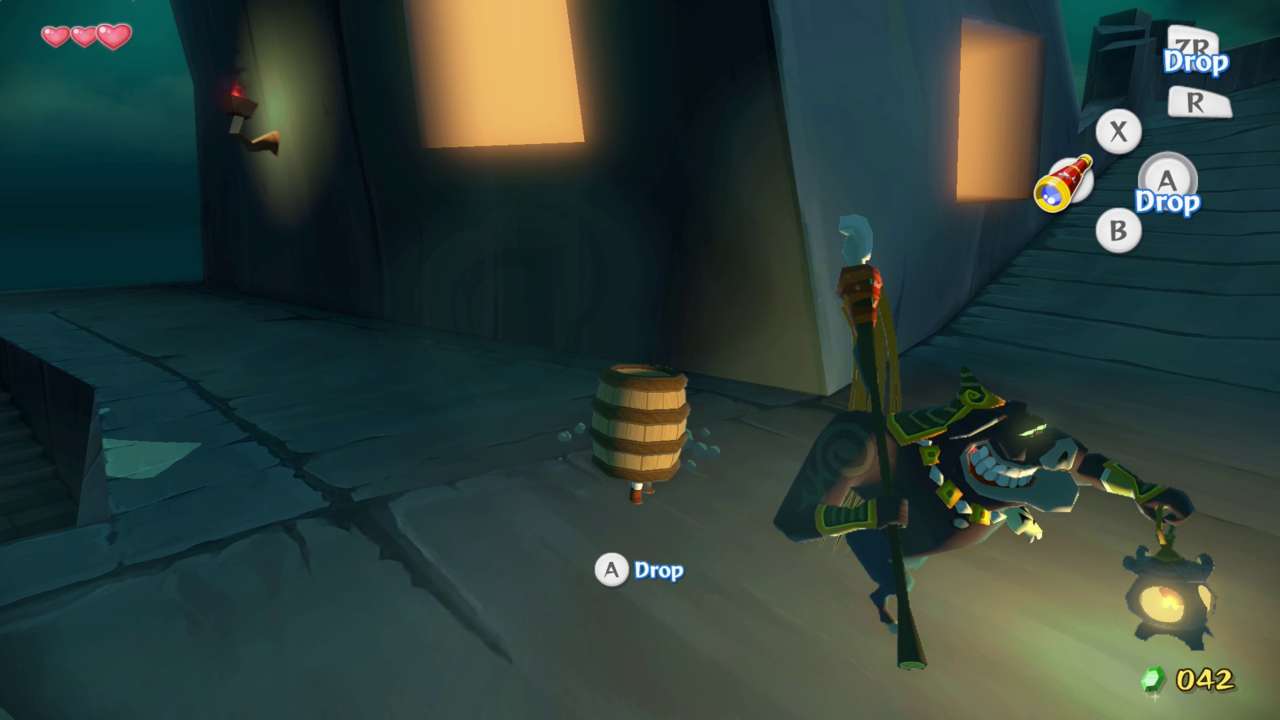Zelda director explains why people love Toon Link
"People react in a big way if something changes and doesn't change to what they expect."

When Nintendo released The Legend of Zelda: The Wind Waker HD onto the Wii U in September, the reaction was worlds apart from when the company first announced the game's cel-shaded aesthetic in 2001. But fans have come around over the years and Eji Aonuma, the frequent director and producer of the Zelda franchise, thinks he knows why.
"Our first reaction was that we really wanted to know why this had changed," said Zelda producer Eiji Aonuma in an interview with GameSpot, recalling the original outrage towards the cartoonified interpretation of the series' hero.
"In this case, when we thought about why this reaction change occurred, we realize there's mainly two factors. One is that, at the time when we first released Toon Link, the art style was a huge change to previous games, and users are often scared of this change--or at least people react in a big way if something changes and doesn't change to what they expect."
"I personally like Toon Link," added Aonuma, "so after Wind Waker we created Phantom Hourglass and Spirit Tracks with the new artwork style. As we did that, then new users joined the franchise and the recognition of Toon Link became widely accepted. This is also one factor why Wind Waker has been remade," he said. But while Link's adventures on the DS revolved around Toon Link, the next game in the series, A Link Between Worlds, goes back to the style of 90s SNES adventure A Link to the Past.
The cel-shaded look was unveiled at a time when the rest of the industry was gunning for grittier heroes--this was the same period that Sega thought releasing Shadow the Hedgehog was a good idea, after all--and Aonuma said that the team at Nintendo originally expected the cel-shading technology to become part of many other games, but the fact that it hasn't has contributed to the current fondness for the character.
"This artwork style of Toon Link, we thought this would be the same sort of style used in a lot of other games. But it didn't really get used. Even though it's not brand new now, it's still something that's unique, and the specialness has not been taken away. That's another reason why we could release The Wind Waker [HD in 2013], because it's recognized but has remained unique."

On the subject of remastering The Wind Waker for the Wii U, Aonuma said the change in attitudes towards the character was a delight for the studio. "We were supported and got more confidence from that, so it was a really pleasing experience for us to create the game."
Aonuma also spoke about his favorite moments in The Wind Waker, explaining some of the reasons why the game has become so iconic since its original release in 2003. Here's what he pointed to specifically:
- The game's opening cutscenes on Outset Island. "I was writing cutscene scripts," he said, "so people could design it how I wanted it, and one really important part of the cutscenes is when Aryll gets taken away. It's really where the adventure begins, because Link then starts off on this journey. I really enjoy that as one of my favorite moments of playing the game."
- Heading to the Forsaken Fortress for the first time. As part of Link's initial, and ultimately ill-fated, attempt to rescue his sister, he joins a band of pirates and finds himself being catapulted across the sea in a barrel. It's another highlight of the game for Aonuma. "This scene where you have to hide and then you plan to get sent over in the barrel is something that's quite exciting, and really one of my favorite scenes," he says. The Forsaken Fortress is also important to the game, as the player returns to it later after Link has unlocked many of his powers and abilities. "I think it's really important how the user feels connected to Link, his behavior and his actions, because as you play you get better at playing the game," says Aonuma. "Link himself also evolves, and becomes better. This connection is something that's really important in the game."
- The Wind Temple boss Molgera, who players encounter late in the game. "The boss when he comes out of the sand, the background music to that particular scene is really exciting for me, so this is really a moment that I cherish as one of my favorites," said Aonuma.

Elsewhere in the interview, Aonuma said that Zelda team is not subjected to the same kind of budget and sales pressures of average developer. "I usually get instruction from Miyamoto-san to create a new Zelda game, and then what I need to do is to state roughly an estimation of budget and the staff numbers we'd need in order to create such a game. In our case, we don't often experience budget constraints, it's more that we need to negotiate how much budget and stuff we need in order to create the game which we're aiming to achieve."
"So that's probably a different situation than some other development teams," he concluded.
The latest game in the series, The Legend of Zelda: A Link Between Worlds, will be released for 3DS on November 22.
Fallout 4 Next Gen Update Comparison ALIEN: Rogue Incursion - Announcement Teaser Trailer Stellar Blade - 13 Things I Wish I Knew S.T.A.L.K.E.R. 2: Heart of Chornobyl — Official "Not a Paradise" Trailer Sea of Thieves Season 12: Official Content Update Video Devil May Cry: Peak Of Combat | Dante: Blazing Tempest Gameplay Trailer Manor Lords - Official Medieval City Builder/RTS Launch Trailer Honkai: Star Rail - "Then Wake to Weep" | Version 2.2 Trailer SAND LAND — Official Launch Trailer Stellar Blade - Hard Mode No Damage Gigas Boss Gameplay Stellar Blade - Hard Mode No Damage Abaddon Boss Gameplay Stellar Blade - (Almost) All Outfits
Please enter your date of birth to view this video
By clicking 'enter', you agree to GameSpot's
Terms of Use and Privacy Policy
Got a news tip or want to contact us directly? Email news@gamespot.com
Join the conversation